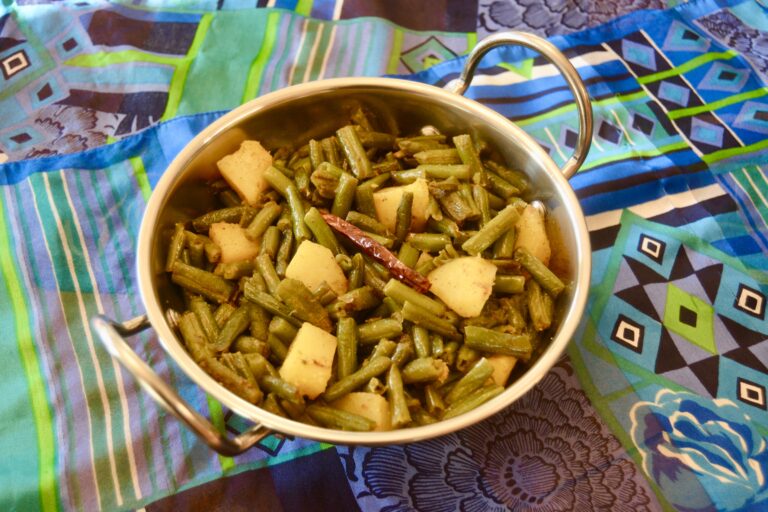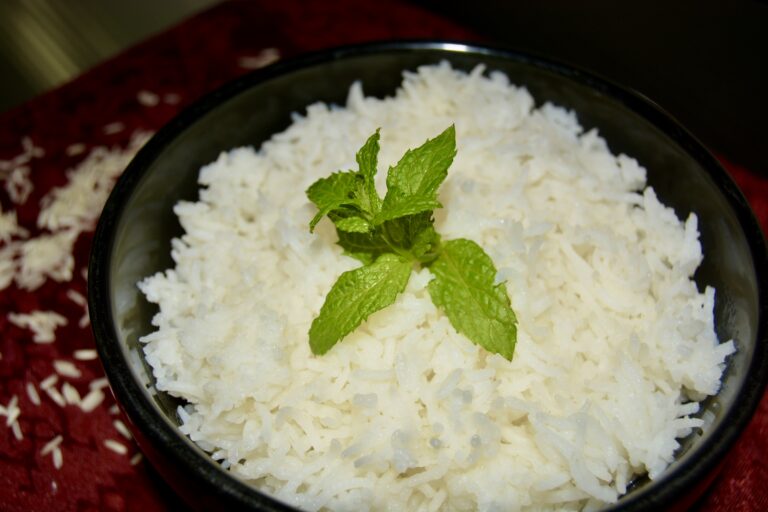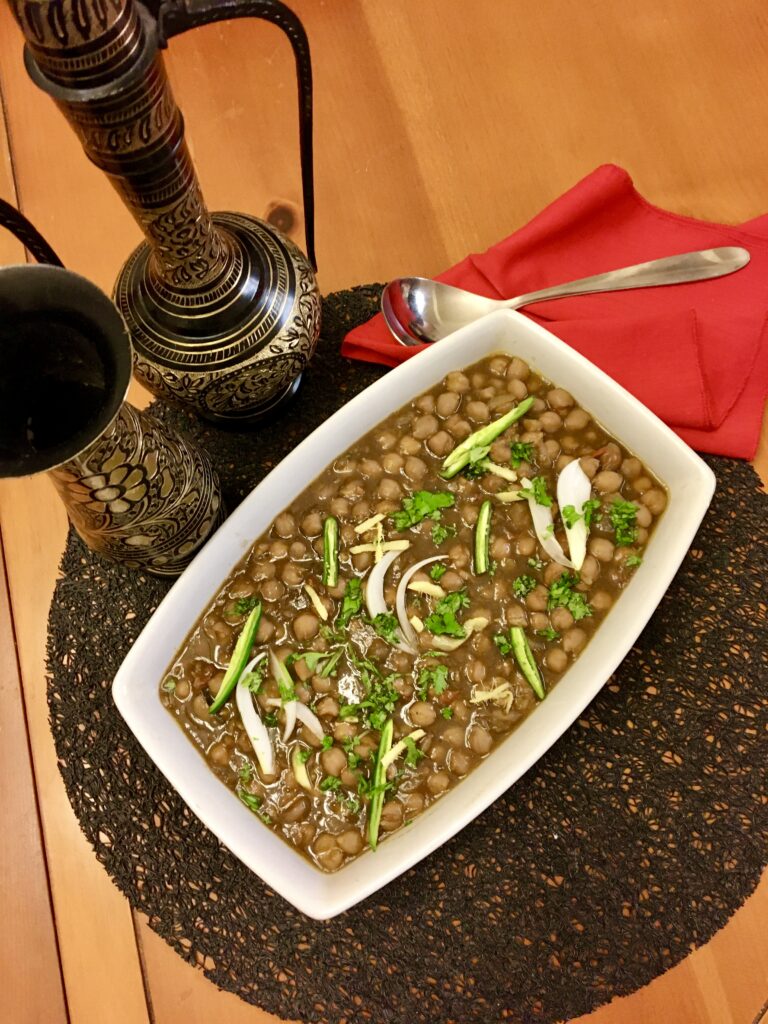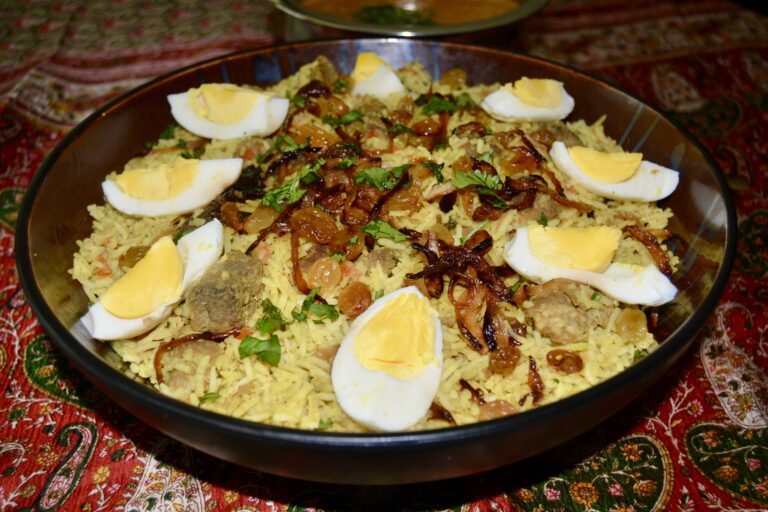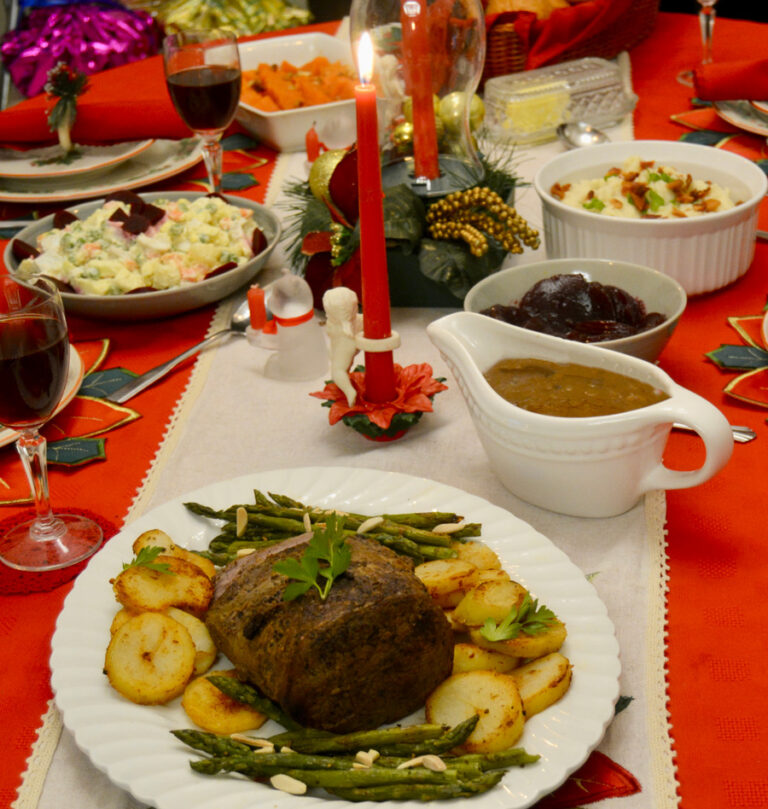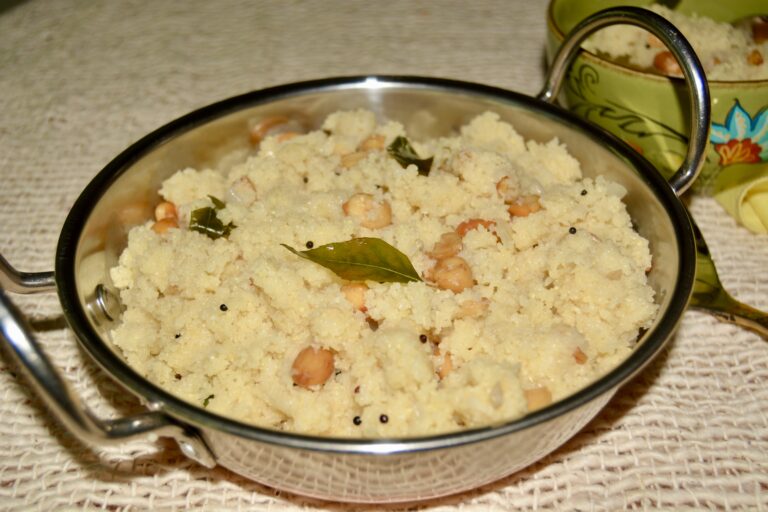I decided to try and grow green beans in my little garden plot. I researched planting and growing on the internet and followed all the tips to grow it in my planting zone. So I was excited when the beans started to sprout and grow. I even got enough to cook two lots of sabzi (sautéed vegetables) with them. Then we had an off-season heat wave which my poor bean plants succumbed to. Hopefully, I will have better luck next time.
Beans and potatoes are an easy vegetable to cook. You can use it in a wrap or serve it with dal, rice, and roti.
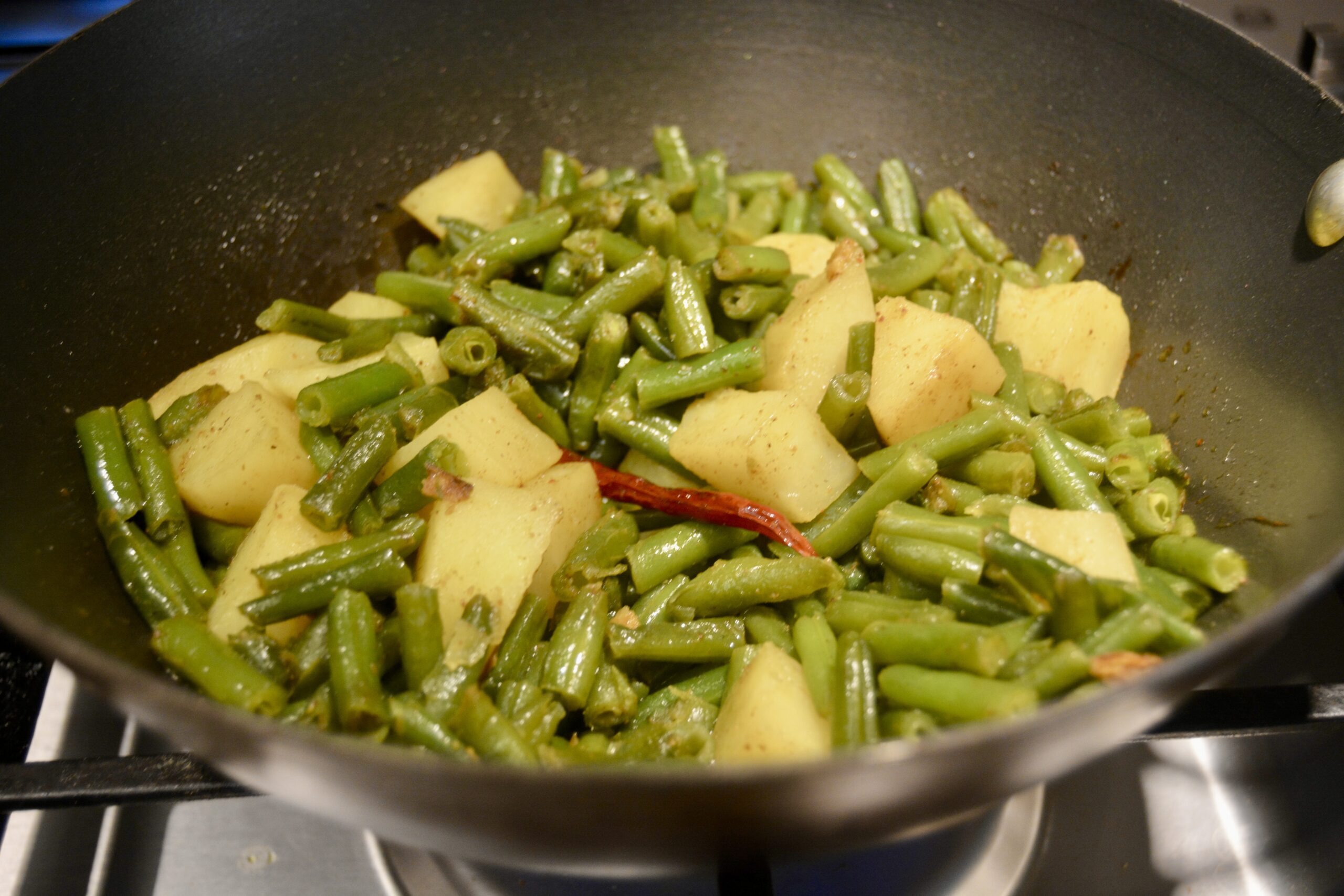
Hara Sem Allu Sabzi (Sautéed Green Beans and Potato)
Ingredients
- 1 lb green beans (or 1 lb packet of frozen green cut beans)
- 1 tbsp fresh chopped ginger
- 1 whole red chili (optional)
- ½ tsp chili powder (more or less, to your taste)
- 1 tsp salt
- 2 medium potatoes (scrubbed, peeled, and cut into 1-inch cubes)
- 3 tbsp cooking oil (your choice)
- ¼ tsp garam masala (optional)
- ⅛ tsp asafetida (optional)
Instructions
Preparing the Fresh Green Beans
- Check the beans and discard any moldy or discolored ones.
- Wash beans several times, rubbing them with your fingers to remove any dirt. Drain in a colander.
- Before cutting the beans, take the stem end off by breaking it with your fingers. This also removes the bean string/vein running down the top side of the bean.
- You do not have to cut the tip if it's tender, but I prefer to.
- Now you can gather several beans together on your cutting board and cut them into 1-inch bits.
- Often at the grocery store, you can get beans in plastic bags already prepped. All you have to do is wash and cut them. When you are done prepping the beans, set them aside while you start cooking the masala.
Preparing the Frozen Green Beans
- If you are using a frozen pack, empty it into a colander and give it several shakes to eliminate any frozen ice crystals. This way, you can monitor the water while cooking and not end up with soggy beans.
To Cook
- In a wok or skillet, heat oil on medium-high.
- Add the whole red chili, and let it change color a bit, about 30 seconds. The fumes are pretty strong, so try not to inhale too deeply!! Add the asafetida (optional) and stir.
- Add the chopped ginger, wait 30 seconds, stir, and then add the turmeric, chili, and cumin powders.
- Stir and add the potatoes. Sauté for 2 minutes before adding the freshly cut or frozen beans.
- Stir well until the beans and potatoes are nicely coated with the masala.
- Add 1/2 cup of water and the salt.
- Cook on medium-low for about 15 minutes till potatoes and beans are tender.
- Transfer beans to a serving dish and sprinkle with garam masala or paprika if you prefer.
- Serve with any Indian meal. You can also use it in a wrap with roti, paratha, or any flatbread.
Notes
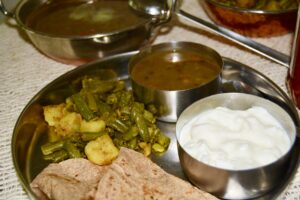
Next to wheat, rice is one of India’s leading food staples. Most dals and curries go well with plain boiled white rice. In India, a majority of households use plain cooked rice in their meals at least once during the day. There are different types of rice:
Short-grained—high in starch and tends to be sticky
Medium-grained—longer and a little chewy when cooked
Long-grained rice—less starchy with a firmer texture and excellent for pilafs.
The popular Basmati rice is a long-grained rice grown at the foothills of the Himalayas, both in India and Pakistan. It is mainly used for pilafs and Biryanis and has a nutty popcorn fragrance. The name Basmati originates from the Sanskrit word Vasmati which means fragrant.
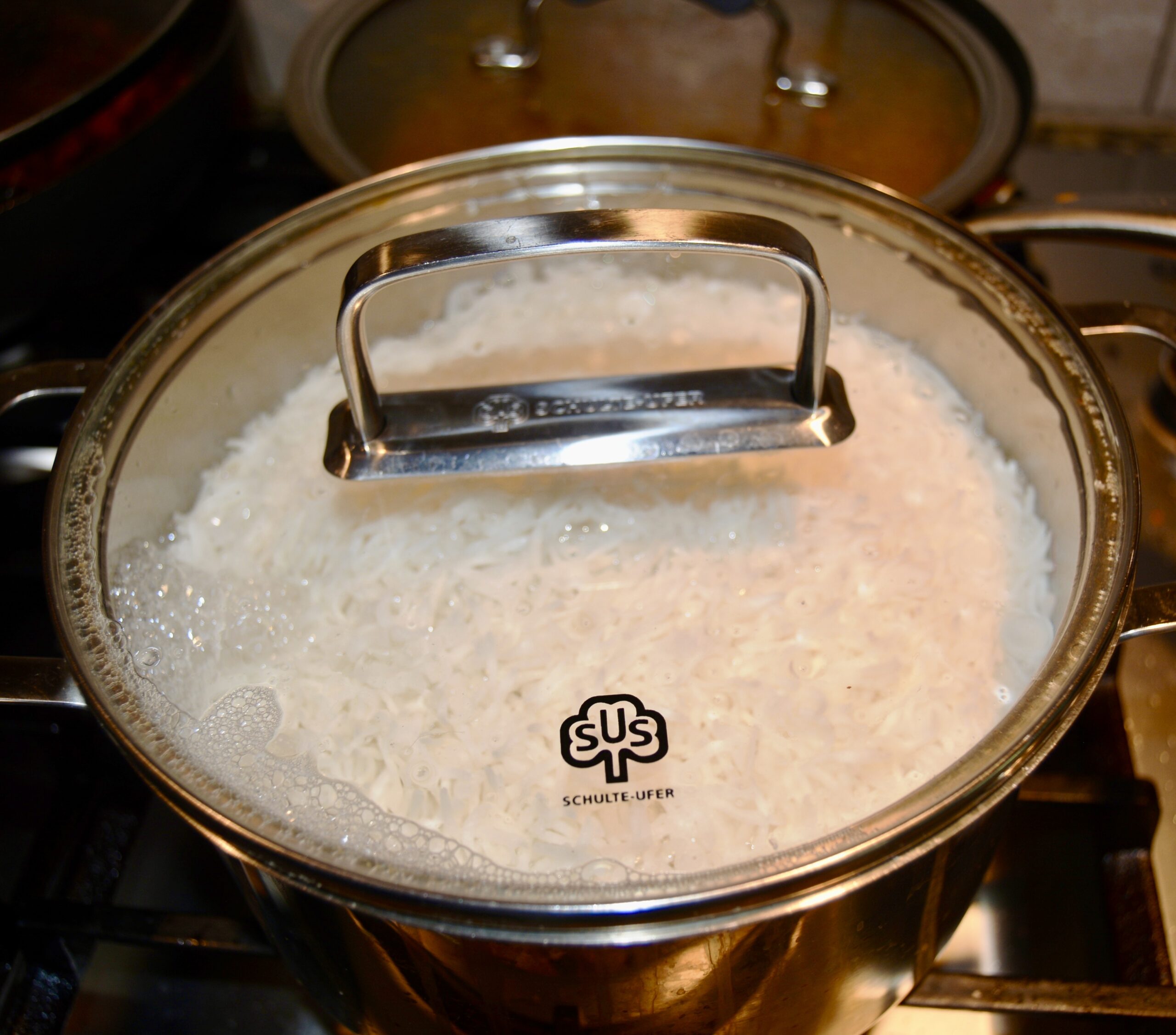
Saada Ubala Hua Saphed Chavaal (Plain Boiled White Rice)
Ingredients
- 2 cups white Basmati rice
- 3¾ cups water
Instructions
- Place the rice in a medium bowl.
- Half-fill the bowl with water and wash the grains by gently sifting and rubbing the rice with your fingers. Do this at least 4 times.
- Now add enough water to the bowl just to cover the rice and let the rice soak in the water for 15 minutes. (You can skip the step if you are in a hurry, but add 4 cups of water when boiling).
- Rinse and strain the rice through a rice or fine strainer under running water.
- Transfer the rice to a medium pot and add 3¾-cups of water.
- Stir the rice and bring the uncovered rice to a boil on medium heat. It takes about 15-20 minutes.
- Once it comes to a rolling boil, lower the heat to low, stir gently, and cover the rice with a tight lid.
- Let it simmer on low for about 15 minutes. Try not to uncover the rice and stir at this stage, as it will allow the steam to escape, making the rice drier.
- Turn off the heat and let sit undisturbed for 5-7 minutes. Remove the lid and fluff the rice with a fork by gently lifting the rice up all around the pot, and-breaking up any clumps.
- Transfer to a serving bowl or dish when ready to serve.
- Plain boiled rice tastes good with any dal and any curried-style meats or vegetables. You can serve it as a meal with the usual array of pickles, raitas, papads, and chutneys.
Notes
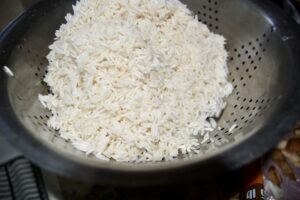 Another way to fix rice is to wash and rinse the rice as above. Then in a pot, add about 4 times the water as rice (1:4 ratio). Bring the rice to a boil on medium heat, then reduce the heat and let the rice cook for 15 minutes. Test the grain to see if it's almost done. Turn off the heat. Now strain the rice through a rice strainer or fine sieve. Be careful of the steam! When all the water is drained, give the sieve a shake and put the rice back into the pot Cover with a tight lid and let it sit for 15 minutes before you fluff it.
Most Indian households, when using this method of cooking rice, save the water that has essential minerals and nutrients to drink later. This is especially so in the southern states of India where "kanji' (rice water ) is used as an energy booster for its healthy nutrients.
When we were kids and had an upset stomach, Mama always gave us plain soupy boiled rice and plain yogurt with pepper and salt to settle our stomachs. I still do that to this day whenever anyone in the house has an upset stomach.
Before synthetic starches came on the market in India, this starchy water (kanji) was diluted and used by our dhobis (people who washed our clothes in the absence of washing machines) to starch cotton shirt collars, kurtas, saris, and cotton table linen.
Be aware that cooking times may vary in higher altitudes, and you may need to increase the water by about 1/4 ounce and the resting time by about 5 minutes more.
If you are using white rice other than Basmati, follow the cooking instructions on the packet. Also do this when you are using a manual or electric pressure cooker, microwave oven, or rice cooker.
Another way to fix rice is to wash and rinse the rice as above. Then in a pot, add about 4 times the water as rice (1:4 ratio). Bring the rice to a boil on medium heat, then reduce the heat and let the rice cook for 15 minutes. Test the grain to see if it's almost done. Turn off the heat. Now strain the rice through a rice strainer or fine sieve. Be careful of the steam! When all the water is drained, give the sieve a shake and put the rice back into the pot Cover with a tight lid and let it sit for 15 minutes before you fluff it.
Most Indian households, when using this method of cooking rice, save the water that has essential minerals and nutrients to drink later. This is especially so in the southern states of India where "kanji' (rice water ) is used as an energy booster for its healthy nutrients.
When we were kids and had an upset stomach, Mama always gave us plain soupy boiled rice and plain yogurt with pepper and salt to settle our stomachs. I still do that to this day whenever anyone in the house has an upset stomach.
Before synthetic starches came on the market in India, this starchy water (kanji) was diluted and used by our dhobis (people who washed our clothes in the absence of washing machines) to starch cotton shirt collars, kurtas, saris, and cotton table linen.
Be aware that cooking times may vary in higher altitudes, and you may need to increase the water by about 1/4 ounce and the resting time by about 5 minutes more.
If you are using white rice other than Basmati, follow the cooking instructions on the packet. Also do this when you are using a manual or electric pressure cooker, microwave oven, or rice cooker.
I have invited family over for tea. I decide to give them heavy snacks so that they do not have to worry about dinner. To make it easy on myself, I order samosas from the local Indian Grocery store and fix Chole Batura myself. That along with some homemade Gulab Jamuns should complete the meal. I have several chole recipes I’ve used over the years, but decide to use one I morphed from several recipes. I am a little apprehensive, but the verdict was “Deeelicious!” I am very grateful for supportive and appreciative family!
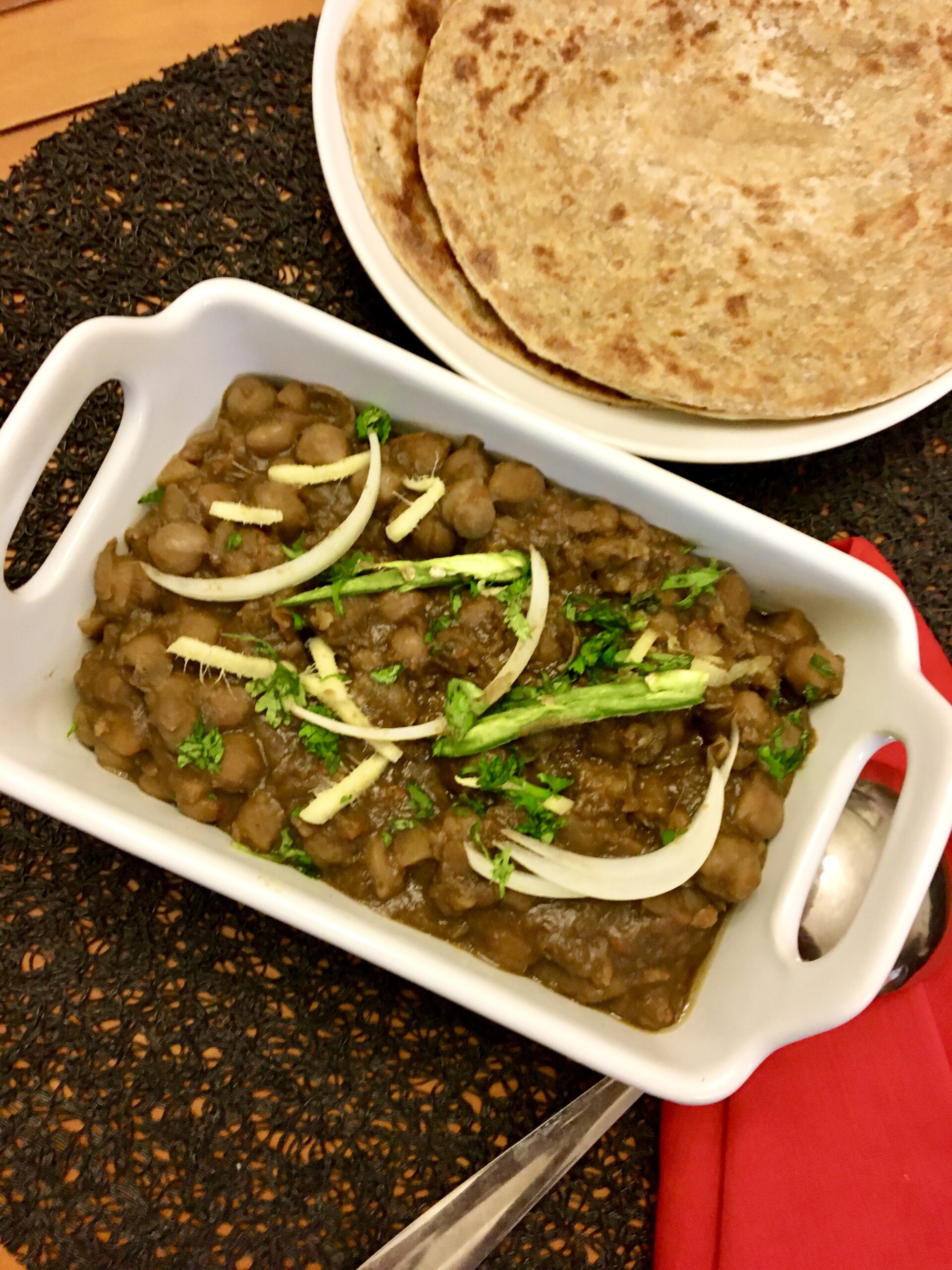
Amritsari Chole (Spicy Chickpeas Curry)
Ingredients
- 2 cups Kabuli chana (chickpeas, garbanzo beans) (Sorted, cleaned, rinsed well, and soaked overnight in 5 cups water)
- 4 cups water
- 2 small cinnamon sticks
- 3 pods black cardamom
- 2 bay leaves
- 2 tsp cumin powder
- 2 tsp coriander powder
- 2 tsp mango powder Or dried pomegranate (available at your local Indian grocery store)
- 1 tsp red chili powder (optional, add more or less depending on your taste for spiciness)
- ¼ tsp baking soda (optional)
- 1 tsp garam masala powder (or to taste)
- ½ tsp salt (or to taste, more or less)
- 1 large (5-6 oz) onion (finely chopped)
- 1-2 fresh green chilis (slit in half or finely chopped to release the seeds into the curry—the seeds add the fire in your mouth sensation, optional, to taste)
- 4 medium tomatoes (finely chopped)
- 4 tbsp cooking oil
- 1 kettle hot water (keep handy to add as needed—I always keep a kettle of water hot water on hand when I cook)
Instructions
To Cook the Beans
- After soaking, rinse, and drain soaked beans and place them in a large pot. Add approximately 4 cups water of enough to cover over the beans, at least two inches.
- Add the whole spices, cardamom, cinnamon, bay leaf, ginger paste, baking soda (optional) and salt.
- Cover and boil on medium high for approximately 50 minutes until the beans are soft. If they start to dry out, add more hot water.
- Once the beans are cooked, remove from stove top, and set aside.
To Tadka / Tempering
- In a large pan or wok, heat the oil over medium heat, and add the chopped onions.
- Fry the onions until they are golden brown, Approximately 7-8 minutes.
- Optional: Add slit green chilies and fry for a minute.
- Add the chopped tomatoes and ginger and sauté until the tomatoes are cooked, and the oil starts to surface on sides of the pan, approximately 10-15 minutes.
- With a slotted spoon, carefully add the cooked chickpeas, but reserve the water (you can strain it ahead if you like).
- Sauté the chickpeas for about 5 minutes, and then add all the spice powders and stir for a minute.
- Now add the strained stock (add some hot water to the stock if it isn't measuring 3 cups of liquid). You need about 3 cups of liquid to continue cooking.
- Cover and simmer on medium low, stirring occasionally, until the gravy thickens.
- Uncover the pot and mash some beans against the inside sides of the pot to thicken the gravy. Check for salt. The finished beans should be soft and blended and a bit mushy, with a thick gravy. If the water dries out during cooking, add a little more hot water.
- Pour into a serving dish when done and garnish with any of the garnished items given.
- Serve with batura, naan, tandoori roti, or just samosas. You can also enjoy it with boiled rice or any kind of pilaf.
Notes
Golden Temple Photo by Laurentiu Morariu on Unsplash
I vaguely remember the first time I had Biryani. It was for a special celebration in Bangalore, South India at my grandparents’ home. I remember a houseful of mother’s relatives! For us kids, a large square Dari (cotton carpet) was spread on the floor. Fresh banana leaves, washed and cut into oblongs, were placed before us. Then the women in the family came around, serving us heaped spoons of Biryani. No utensils were provided, and we ate with our fingers (hands duly washed and using the tips of our fingers to scoop up the rice)! It was delicious! Mama always fixed it for New Year’s lunch with Channa Dal Curry and Raita. I continue the tradition when able!
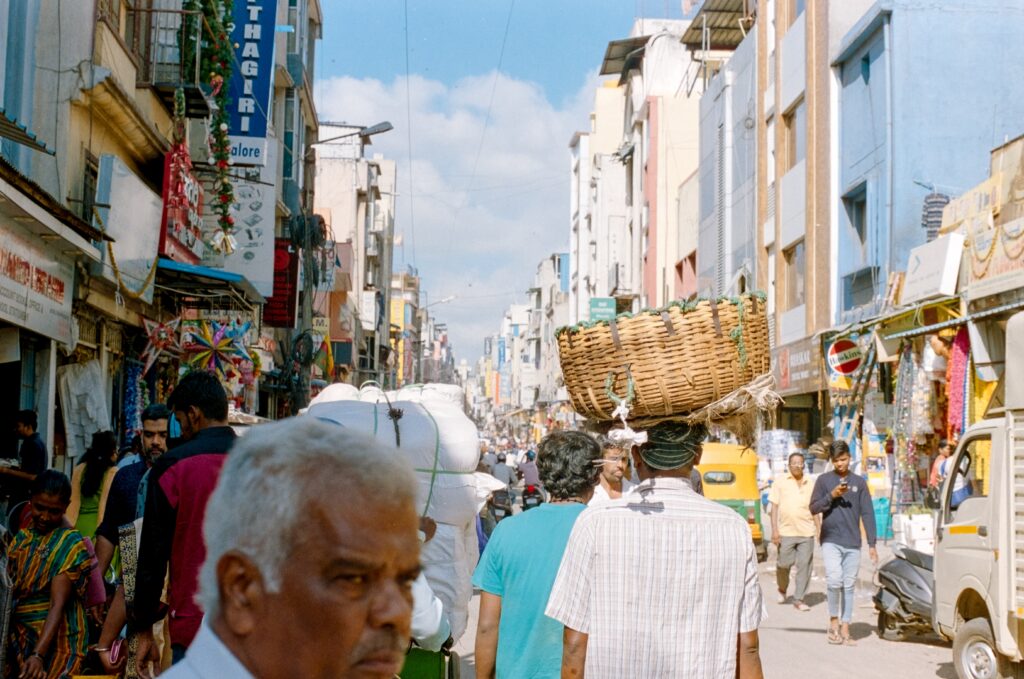
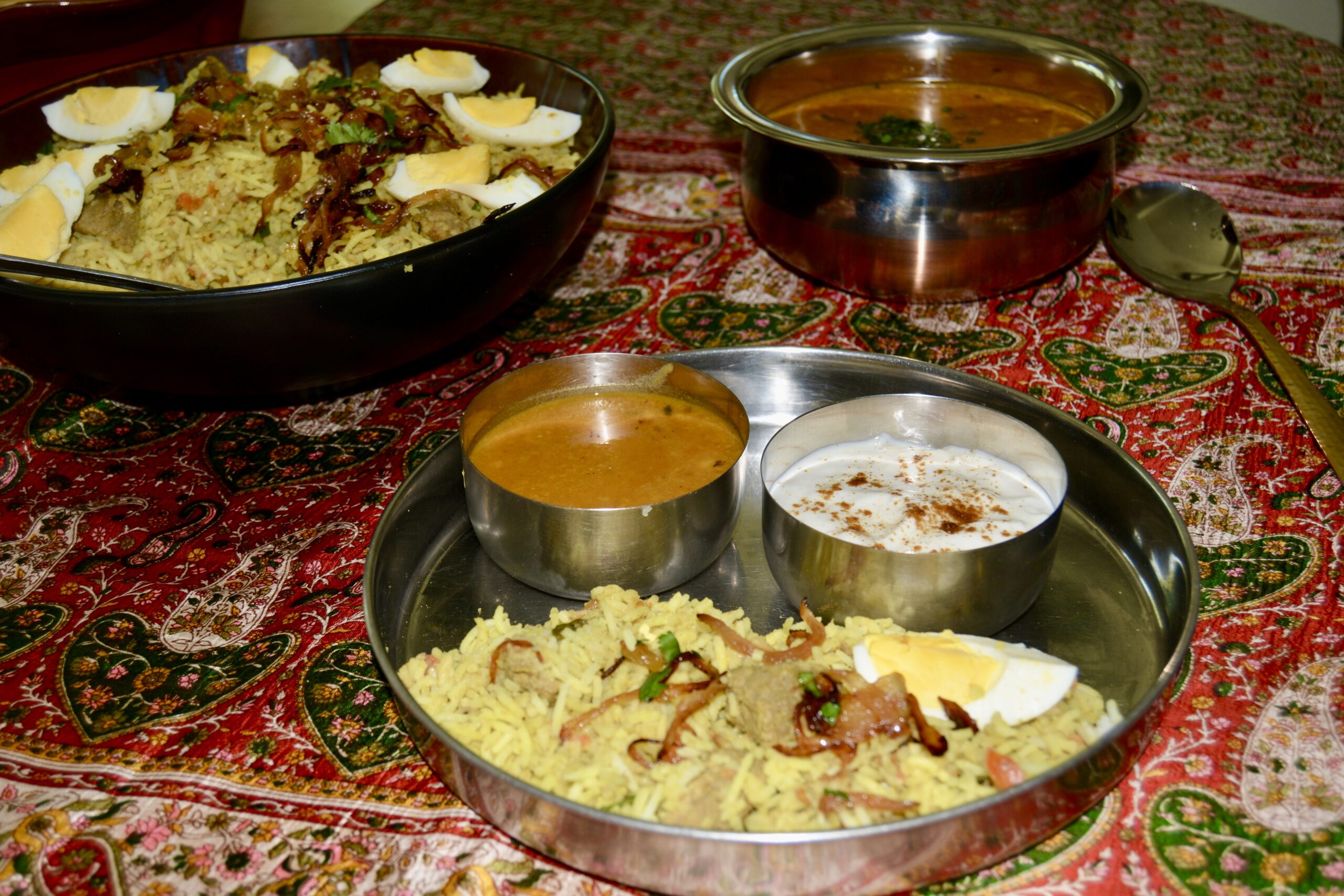
Mama's Biriyani
Ingredients
Masala for the Korma
- 3 tbsp ginger paste (freshly ground ginger and garlic are best)
- 2 tbsp garlic paste
- 1 bunch fresh green coriander (leaves only, remove stems—a bit of stem is okay)
- 3 tbsp coriander powder
- 1 tsp turmeric powder
- chili powder to taste
Other Ingredients
- 5 cups Basmati rice
- 3 lbs Meat (chicken or beef) (cleaned and set aside)
- ¾ cup oil (olive, vegetable, or coconut oil)
- 4-5 large onions
- 2 fine Serrano chilies (whole, washed and almost slit in half)
- 4 cinnamon sticks
- 4 black cardamom (large)
- 6 green cardamom (small)
- 6 cloves
- 4 tomatoes (finely chopped)
- 1 tbsp poppy seeds (ground smooth, optional)
- 1 cup yogurt (whisked smooth)
- 1 can coconut milk (or the fleshy, white part of 1 fresh coconut ground smooth the poppy seed)
- 2 tbsp mint leaves (finely chopped)
- salt to taste
- 2 limes (juice only)
- 2 cups peas and carrots
- cashews and raisins (for garnish)
Instructions
To Prepare
- Gather all the ingredients before you start. Wash and soak the 5 cups of rice for 15 minutes before you drain it.
- Heat ¾ cup of oil. You need extra when you make biryani.
- Add the cinnamon, cardamom, and cloves. Add cut onions and slit green chilies. When half fried (about 10 mins) add meat and salt to taste. Cook in its own juice for about 10-15 minutes until the meat is no longer pink.
- Add the ground ginger, garlic, spice powders, and green coriander. Fry until the masala is done. That is, until the water has evaporated and the oil starts to surface at the bottom of the pan. It takes about 10-15 mins.
- Now add enough water to cover and cook the meat until three-quarters cooked. (You can use a pressure cooker if you like but make sure the meat is not overcooked). When the meat is three-quarters cooked, and the oil starts to surface on top, remove the pan from the stove. Drain out the excess oil into a measuring cup or bowl. Set aside.
- Put the meat back on the stove. Add the beaten yogurt, tomatoes, coconut, and cook until you have a nice thick gravy, about 10-15 minutes. Remove from stove.
- To the excess oil you set aside, add the finely cut mint and juice of the lime. Set aside.
For the Rice
- Boil 10 cups of water (two cups water to one cup rice). When the water comes to a boil, pour the rice into the boiling water, and add the salt.
- Add the peas and carrots, if desired.
- When the is almost cooked, drain off all the water. (To test if the rice is almost cooked, remove a few grains and press on them between your finger tips. Most of it will feel soft, but should still feel grainy).
To Cook the Biriyani
- Turn oven on to 250°.
- In a large roasting pan or oven-safe pot, place a layer of rice, then a layer of the korma curry. Continue in this fashion until the korma is used. The last layer should be the rice. Now drizzle the oil, lime, and mint mixture all over the rice. Cover the dish and cook in oven for 20 minutes.
- Pull the roaster out of the oven, uncover, and with a fork gently toss the rice so it is blended well. Test if the rice is completely cooked. If it still feels grainy, then reduce turn the oven to 200° degrees and cook the rice until it is done.
Notes
Streets of Bangalore Photo by Andrea Leopardi on Unsplash
A delicious gravy that goes perfectly with any roast!
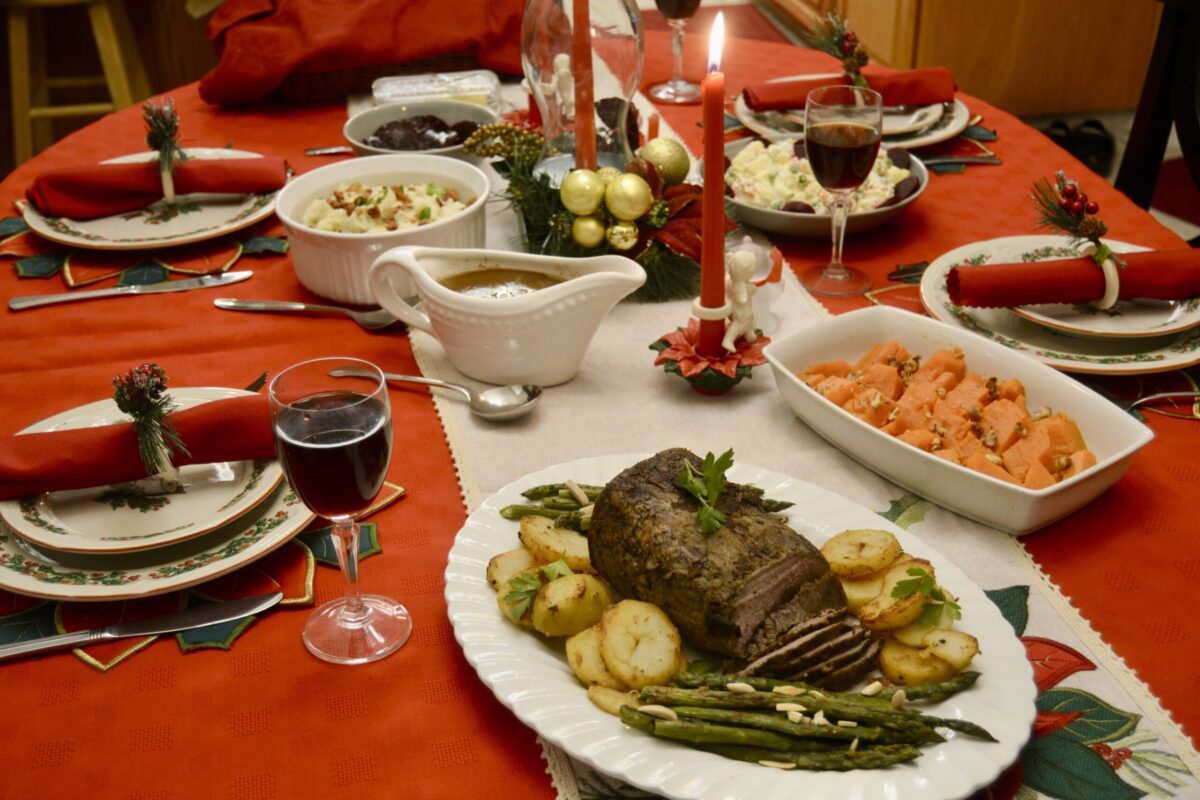
Mushroom Gravy
Ingredients
- ½ small onion
- ½ cup button mushrooms (wiped with a moist paper towel and finely chopped)
- 2 cups beef broth
- 1 tbsp all-purpose flour
- 1 tbsp butter
- drippings from skillet (strain skillet drippings to remove any whole spices—it is not necessary to do so with the drippings from the roasting pan)
Instructions
- Turn the heat to medium and place a small pan on the stove.
- Add the butter and some drippings to the pan.
- When the butter and fat are heated, add the chopped onions and sauté for 3 minutes until the onions are translucent.
- Now add the mushrooms and let them cook for another 2 minutes.
- Add the flour. Cook constantly, stirring, until fragrant and light brown. About 2 minutes.
- Add the beef broth, continually stirring a little at a time, so no lumps form.
- Add the rest of the drippings. Let the gravy cook and thicken. Approximately 7 minutes.
- Pour into a gravy boat to serve with your favorite roast.
Notes
Uppama is a breakfast dish typical in Southern India. Mama, being from the South, meant it was part of her recipe repertoire. Uppama is made out of semolina (rava), and is like a thick dry porridge or grits with onions, nuts, and typical South Indian seasonings.
Rainy days or cold mornings are a clarion call for me to fix Uppama. You can make it in various ways—with sooji (semolina), bread, poha (flattened flakes), and oats. I also make it with leftover Idlis.
Uppama is excellent for breakfast and a wonderful tea time or anytime snack.
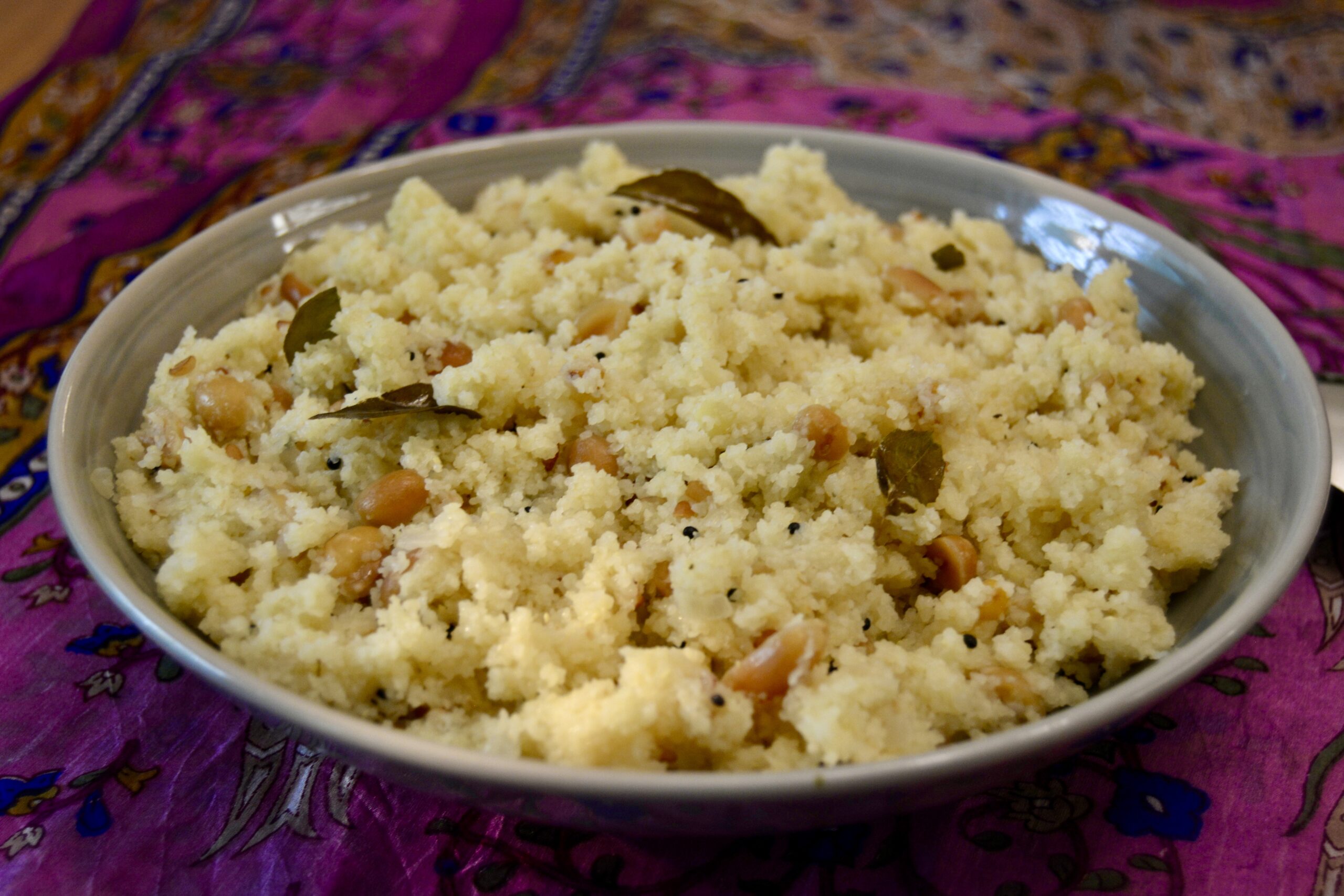
Sooji Uppama (Savory Semolina)
Ingredients
- 1 cup fine sooji (semolina)
- 1 medium chopped onion
- 2 tbsp cooking oil
- 1 medium green chili (stem removed and slit in half or chopped, amount of chili is to your taste)
- 1 tsp mustard seeds
- 1 sprig curry leaves (approximately 10-12 leaves–available at Indian grocery stores)
- 1 tsp channa dal (split Bengal gram without skin)
- 1 tsp urad dhulli dal (split black gram without skin)
- ½ cup cocktail peanuts (or cashew nuts, or a combination of both (optional))
- 2½ cups water
- 1 tsp salt
- ½ lemon (seeds removed)
- 2 tbsp desi ghee or butter
- 1 tbsp chopped fresh cilantro (coriander) leaves
Instructions
- Roast the sooji (semolina) in a wok (kadai) or a broad pan.
- Heat the wok on medium heat and pour the sooji into it. Dry roast by stirring the sooji constantly for two minutes till fragrant and slightly brown.
- Remove from heat and pour onto a plate or thali (rimmed steel plate) to cool.
- Wipe the wok or pan of any residual roasted sooji.
- Pour in 2 tablespoons of oil and heat on medium heat.
- When hot( not smoking), add the mustard seed. Let crackle for 30 seconds, then add the curry pata (be careful of it splattering).
- Stir for 30 seconds, and then add the lentils. Stir it.
- Now add the chopped onions. Stir fry until the onions turn translucent. About 3 minutes.
- Add the chopped green chili and stir.
- Now add the water and salt. Do a taste test. Turn the heat to medium-high and bring the water to a rolling boil. The water should be slightly salty.
- Once boiling, reduce the heat to low. Pour in the peanuts and/or cashew nuts (your choice), and stir them.
- Using a spoon or your hand, pour the roasted sooji into the water with one hand while quickly stirring the mixture with the other until you use all the sooji. Stir and mix well.
- To make it easier, you can put the roasted sooji into a measuring jug, so it is easy to pour. Do this quickly, as the sooji immediately absorbs the water and forms lumps.
- Cover and let the sooji steam on low heat for about 2 minutes. Turn off the heat.
- Uncover the lid and squeeze the juice of the half lemon all over the cooked sooji.
- Add the desi ghee or butter. (Clumps are fine or you can melt the ghee or butter a bit and then add it).
- Stir well, breaking up any sooji lumps. Cover and let rest for another 2 minutes.
- Transfer the uppama to a serving dish and sprinkle with chopped cilantro.
- Uppama can be eaten by itself or with coconut or peanut chutney. I like to top it with extra nuts.
Notes
Check out the Glossary section.

